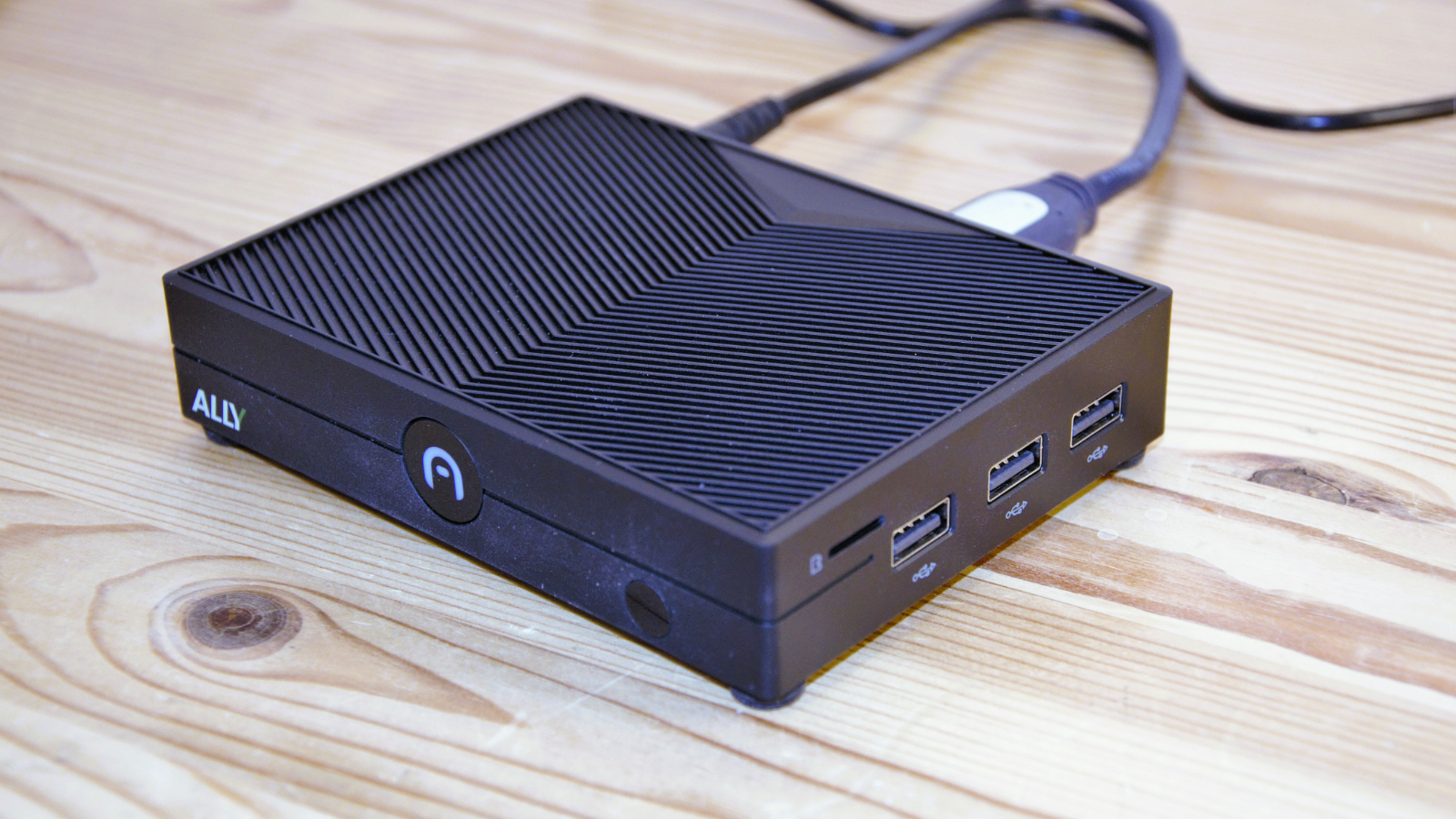
Azole Ally: 30 Second Review
Many have noted that Microsoft’s grip on the world of computing has declined significantly, allowing alternatives like Linux, its Android derivatives, and ChromeOS to take a chunk of what was once the Windows pie.
The Azulle Ally Android PC is the embodiment of this fate, with technology designed for mobile devices but repackaged in a mini PC case.
What’s important to realize is that all of the pictures on Azulle’s website are photos, but since it’s mostly made of plastic, Ally doesn’t look radically different in real life.
It’s a small box measuring 5 x 3.7 x 1 inch (125 x 93 x 25 mm) with only small ventilation holes on the metal underside. Inside is the Qualcomm Snapdragon 600 series ARM SoC, and on the outside are four USB ports, two HDMI ports, a LAN port, a MicroSD card slot, and a 3.5mm audio jack.
The unit has a US PSU port rated at 5V at 3A (15W), and does not include accessories.
Our experience operating this device was annoying, to say the least. The version installed on Ally is a stripped down version of Android, and it’s initially difficult to tell which version is there since there’s no About system.
There are few pre-installed apps, and no app store (not even a Chinese one). The only practical way to get the software on this device is to download it from the APK site or do so elsewhere and use a USB key to make it available.
Considering how far Android has come in the past decade, Ally was a reminder of how bad the system used to be. The platform is QCOM, a version of Android 10, and is believed to run on a phone that can’t turn on if it’s in portrait or landscape mode.
Unless you have a simple Android app that will run on a device with 4GB of RAM and 64GB of storage and needs to output to a display and connect to an Ethernet network, there are many tablets available that have much better specs for this Money.
Azole Alli: price and availability
- how much does it cost? starting from £193
- When does it come out? Available at present
- Where can you get it? You can get it directly from Azulle
At the time of writing, the Ally is only available from manufacturer Azulle, and costs £193.
There is only one version, and it is black.
For comparison, NiPoGi makes a Mini Desktop system, the W-11, which has 8GB of memory and 256GB of storage and costs just £140. You can install ChromeOS Flex on it to get the same capabilities but a much better experience.
Therefore, these devices are not realistically priced.
Azul Ally: Specifications
| purpose | Specifications |
|---|---|
| CPU: | SM6125 Snapdragon 665 (8 cores) |
| GPU: | Adreno 610 950MHz |
| ram: | 4GB LPDDR4X |
| storage: | 64 GB |
| Ports: | 3x USB 2.0 Type-A, 1x USB 2.0 Type-C, 2x HDMI, 1x MicroSD card slot, 1x 3.5mm audio jack |
| Networks: | 1 Gigabit LAN, Wi-Fi 5, Bluetooth 5.0 |
| OS: | Qcom (Android 10) |
| Basic energy: | 15 watts |
| Prince sultan university: | 5V 3A |
| Dimensions: | 125 x 93 x 25 mm |
Azul Ally: Design
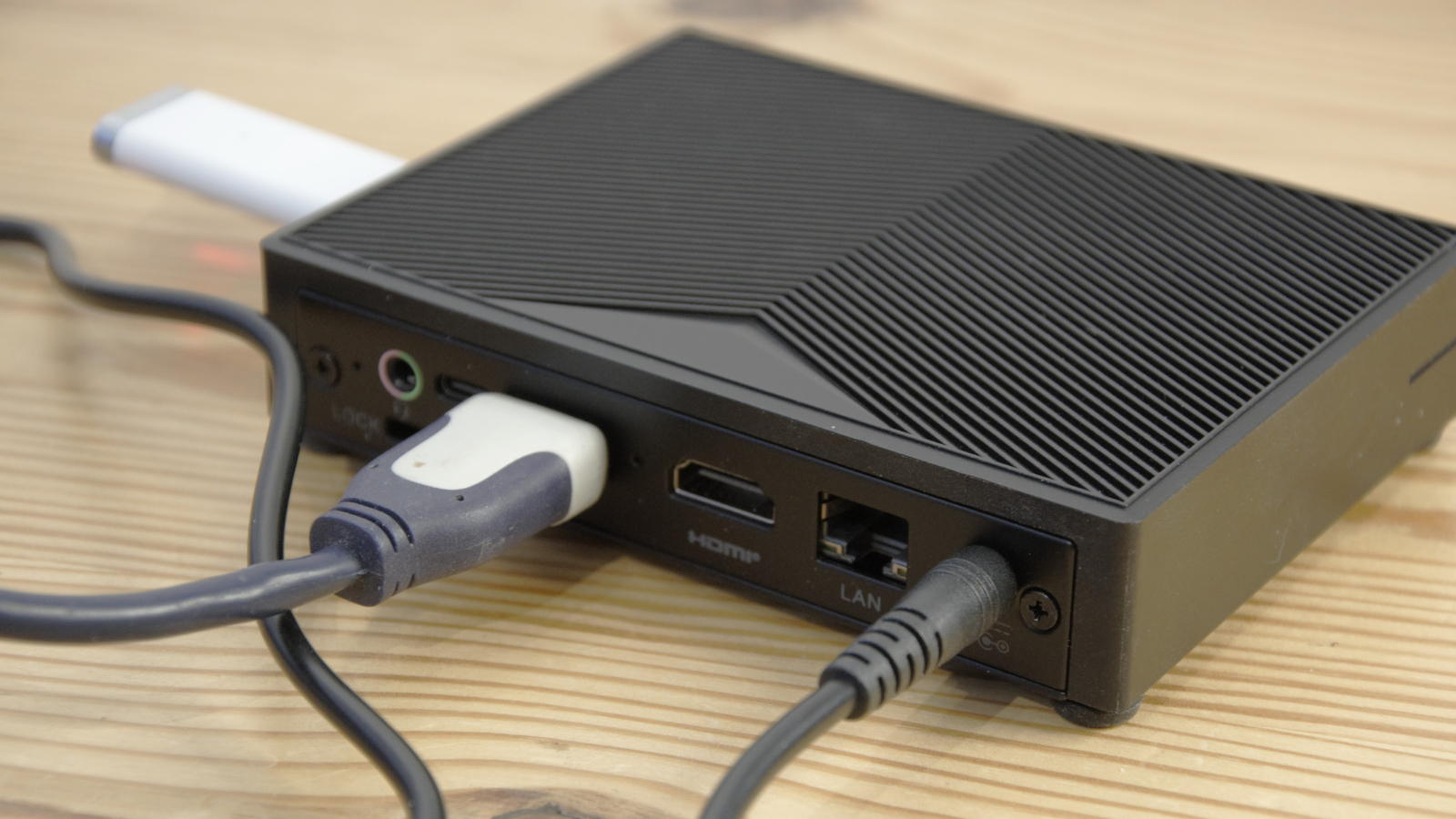
- Raw Android 10 is built for the phone
- Basic construction
- No upgrades
The ally’s removal from its box, build quality, and lack of accessories indicate a lack of sophistication.
It’s a textured plastic case with no active cooling inside, a power button on the front and ports on the right and back sides.
It’s all USB 2.0 ports, and the only nice feature is a MicroSD card slot that allows you to add storage to the limited 64GB that comes pre-installed.
This is a valuable feature because there seems to be no practical way to upgrade this device any other way, as all the components are surface mounted.
Azulle may call this a Mini PC, but it’s more of a phone with extra USB ports and HDMI outputs, and as such, it doesn’t offer the flexibility or power that a PC can.
Even with telephone technology, this device would have been very useful. But minimal effort was put into installing Android 10, which mostly speaks for “phone” and also has controls like screen brightness that do nothing on this device.
When it was first released, we assumed something was wrong. Because it had very few icons on the desktop, and the interface didn’t contain any of the usual suspects. We’ve seen fan-made Android versions that have more inherent functionality, and the lack of an app store or Google’s standard suite of apps makes for some tough exercises.
It’s possible to sideload apps, if that’s awkward, but the core of this system seems confused about which scenario it’s running and whether it’s a phone, tablet or something else.
When running apps, it can send Ally to rotate in sideways, portrait or landscape mode, or switch between them randomly. The number of applications that worked well was limited, and a few refused to install or run properly.
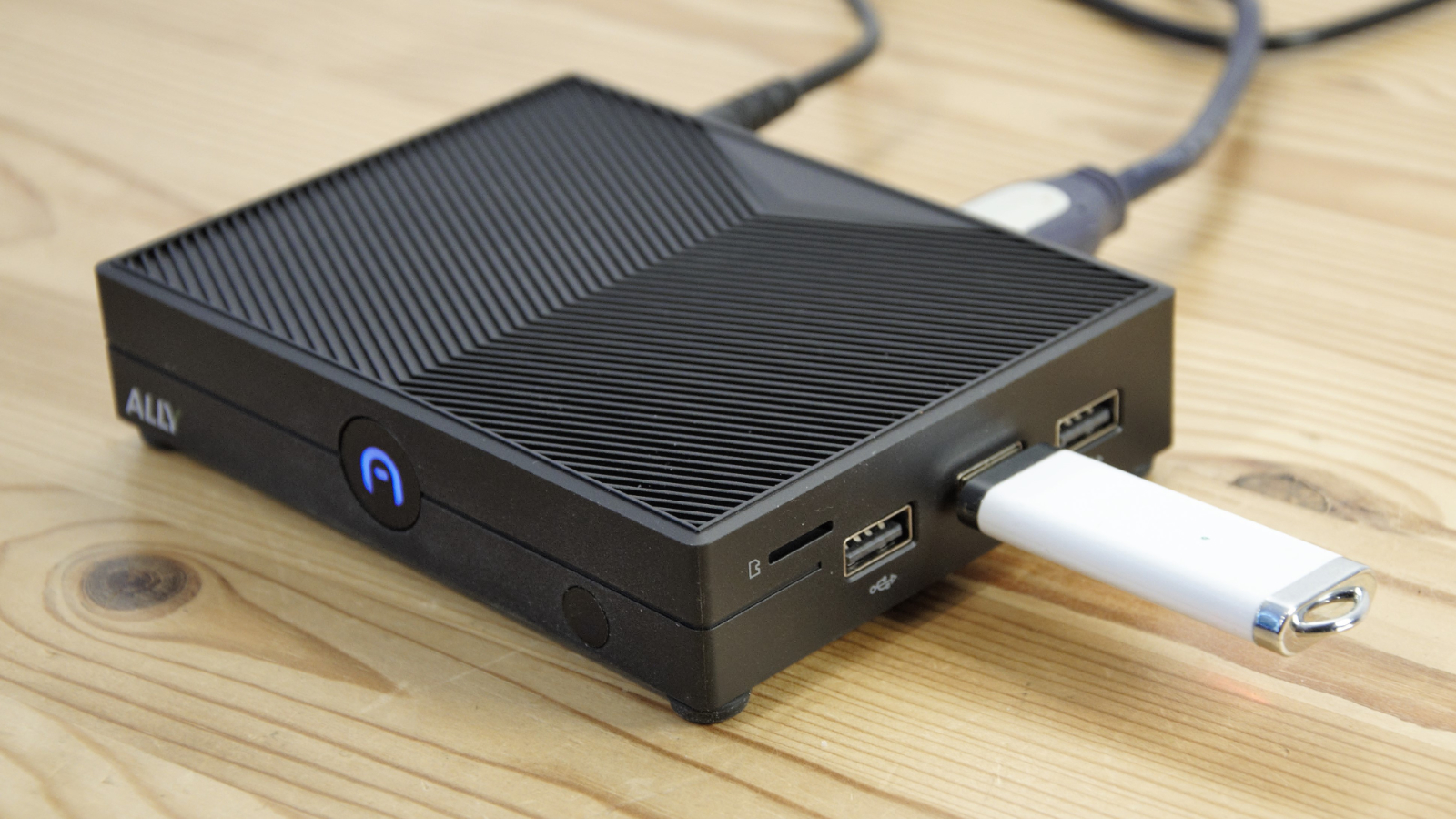
The success of Android depends largely on the choice of application and how most things work on the majority of devices. Once you get those things out of the way, there’s not much that’s compelling about a Linux version without any way to clearly communicate what problems it has.
I did try installing ChromeOS Flex on it to see if it would boot acceptably, but it’s not possible to get it to boot from an external USB drive.
Unless you’re an expert at writing and debugging Android apps on a system that doesn’t have all the standard components, this isn’t a useful machine.
Chuwi CoreBox V: Hardware
- Qualcomm Snapdragon 665
- RAM and storage are limited
- USB 2.0 only
Imagine you’re stranded on a desert island with a pile of electronic devices, and you’re dreaming of making a desktop system out of phone parts. This, in short, is Azul’s ally.
At its heart is the Qualcomm Snapdragon 665 processor, a chip designed for entry-level phones that has eight cores in a dual configuration of four. Half of the cores are Kryo 260 Gold clocked at 2.0GHz, and the rest are Kryo 260 Silver clocked at 1.8GHz. It’s powered by the Adreno 610 running at 950MHz, a GPU that’s not destined to be the choice of gamers.
Built on Samsung’s legacy 11nm FinFET, the SoC is mostly about power efficiency, which explains why the Ally doesn’t need active cooling to keep working.
It includes a Qualcomm Spectra 165 image signal processing unit, but since this device doesn’t have a camera, it can put its feet up indefinitely. The same can be said about the LTE modem and a lot of other functions.
On some phones, the SoC comes with 8GB of memory and 128GB of storage, but here, it’s blessed with half that amount on both sides. It is possible to use external storage, but since all the USB ports and MicroSD card slot use USB, the performance of any transfer will be a maximum of 40MB/s.
Downloading files will likely be faster using the built-in 802.11ac channel (Wi-Fi 5) or the 1Gb Ethernet LAN port.
One interesting aside is that Azulle claims that the two HDMI ports can output at 1080p, but the screen is at a fixed resolution of 1280 x 720, and we didn’t find a way to access the higher resolution.
Another potentially useful feature is that the front of the Ally appears to have an infrared sensor, likely for the remote control. This is not mentioned in any of the documentation, and a remote control is not provided.
Azul Ally: Performance
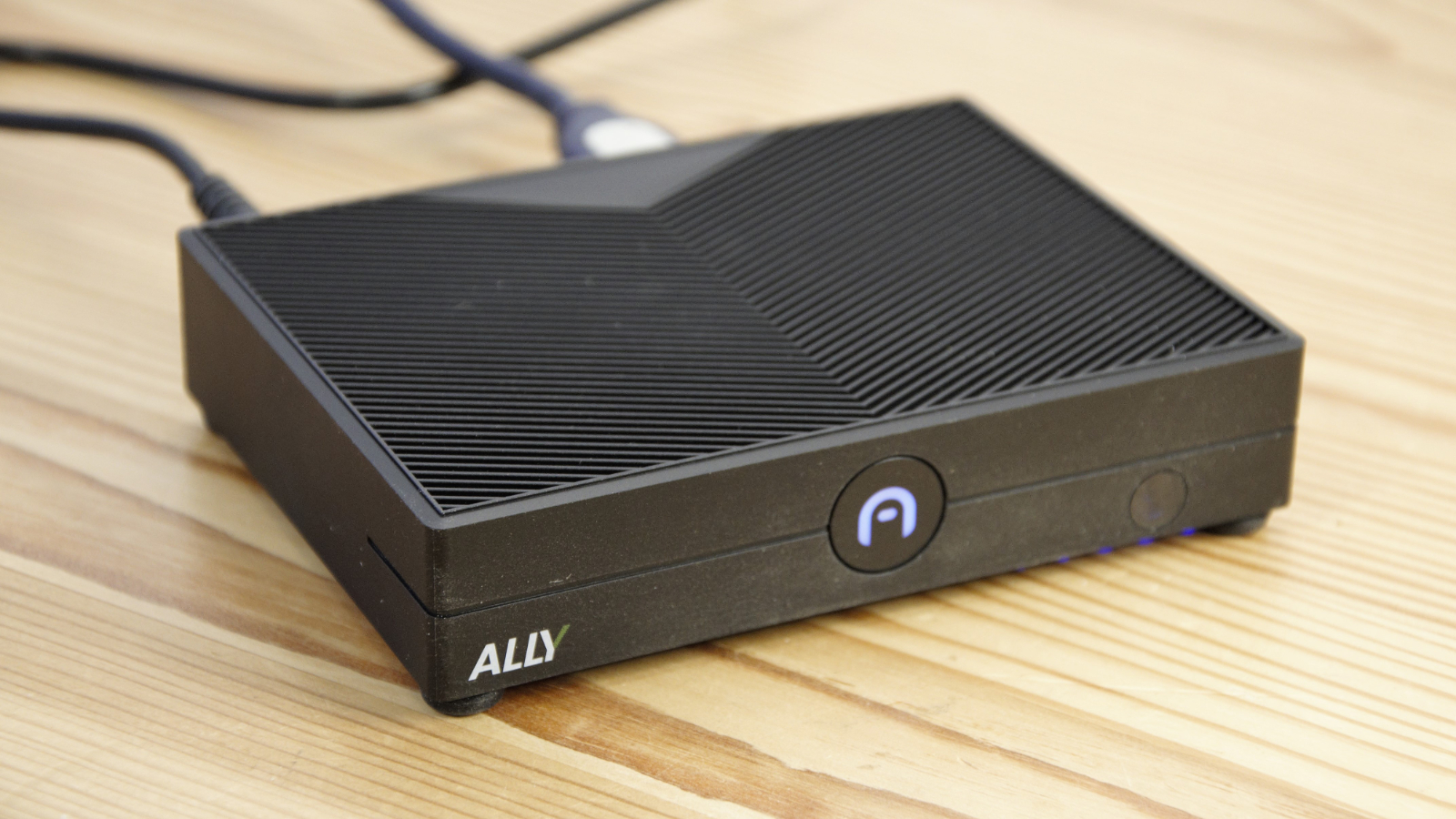
- Software issues
- Performance problems
- Faded
|
Standard |
Exam |
a result |
|---|---|---|
| 3DMark: | Wildlife: | 260 |
| OGL slingshot: | 1771 | |
| Swinger ex. OGL: | 1125 | |
| Swinger ex. Vulcan: | 1035 | |
| Computer Mark 10: | Office test: | 5812 |
First, this isn’t the typical selection of tests for a mini PC or even an Android phone. The test selection was also changed because a lot of apps were not working properly or were not installed.
What worked was 3DMark and PCMark, but we didn’t have any success with GeekBench or GFX.
Geekbench will not install, and GFX will run out of memory on every test.
These results are well below what we’d expect from a modern tablet powered by a MediaTek Helio G99 SoC, and the SM6125 Snapdragon 665 is a small fraction of that performance level.
To put this into perspective, the Unihertz Titan Slim, using the Helio P70, still achieved a wild score of 735. That’s three times that achieved by this unit.
The only phone we’ve seen that’s slower than this recently is the Ulefone Armor 16 Pro, which uses the Helio G25.
The same SoC is used in the Xiaomi Redmi Note 8, among other budget phones, and one of these can be picked up for around £150. What’s interesting about the Snapdragon 665 is that when used in a phone, its important feature is its power efficiency, which provides good battery life. Which begs the obvious question why put it in a device without a battery?
Whatever the answer, it wasn’t going to go fast.
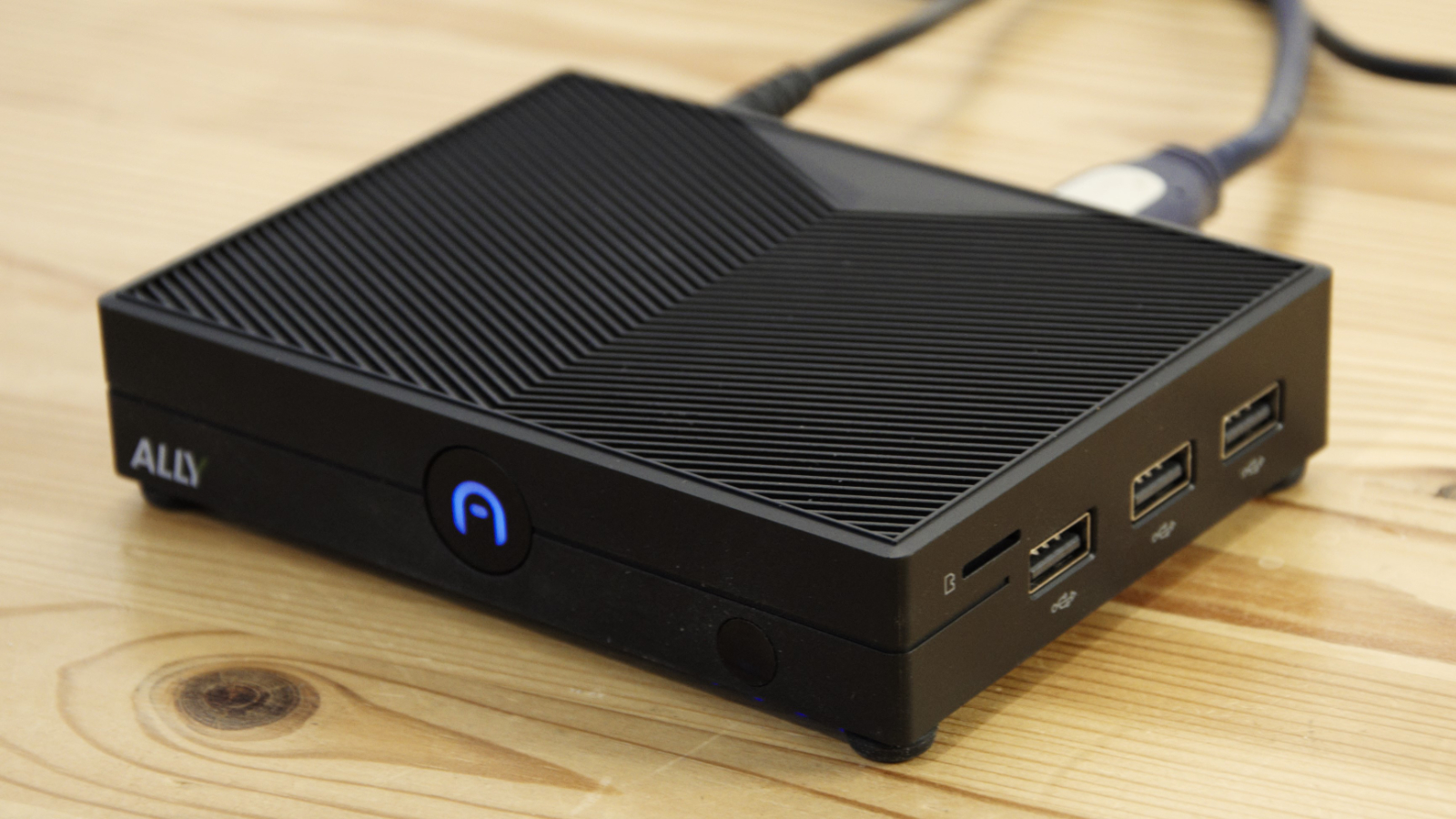
Azul Ally: Referee
The Ally isn’t the friend most people would want, as the due diligence needed for Android isn’t straightforward. The hardware looks good, if mediocre by today’s standards, but the version of Android 10 it uses has more holes than Swiss cheese.
This makes it significantly less useful unless you’re an Android expert.
The biggest issue here is that many Android tablets out there cost a very similar amount, have a newer, more polished version of Android, and have much higher performance hardware. Why would you buy this over them is a question we can’t answer. If it was much cheaper, like half the price, and had a fully implemented version of Android 13, it might be a viable option.
But as it stands, this is an overdone, ill-defined and poorly implemented solution.
Should you buy Azulle Ally?
| value | Expensive for cheap phone technology | 2 / 5 |
| design | It’s a box with no easy way inside and no active cooling. | 2 / 5 |
| hardware | Lots of USB ports, but the Android 10 version doesn’t have an app store and feels like a phone. | 2 / 5 |
| performance | disappointing | 2 / 5 |
| Total | Not of high enough quality or value to recommend. | 2 / 5 |
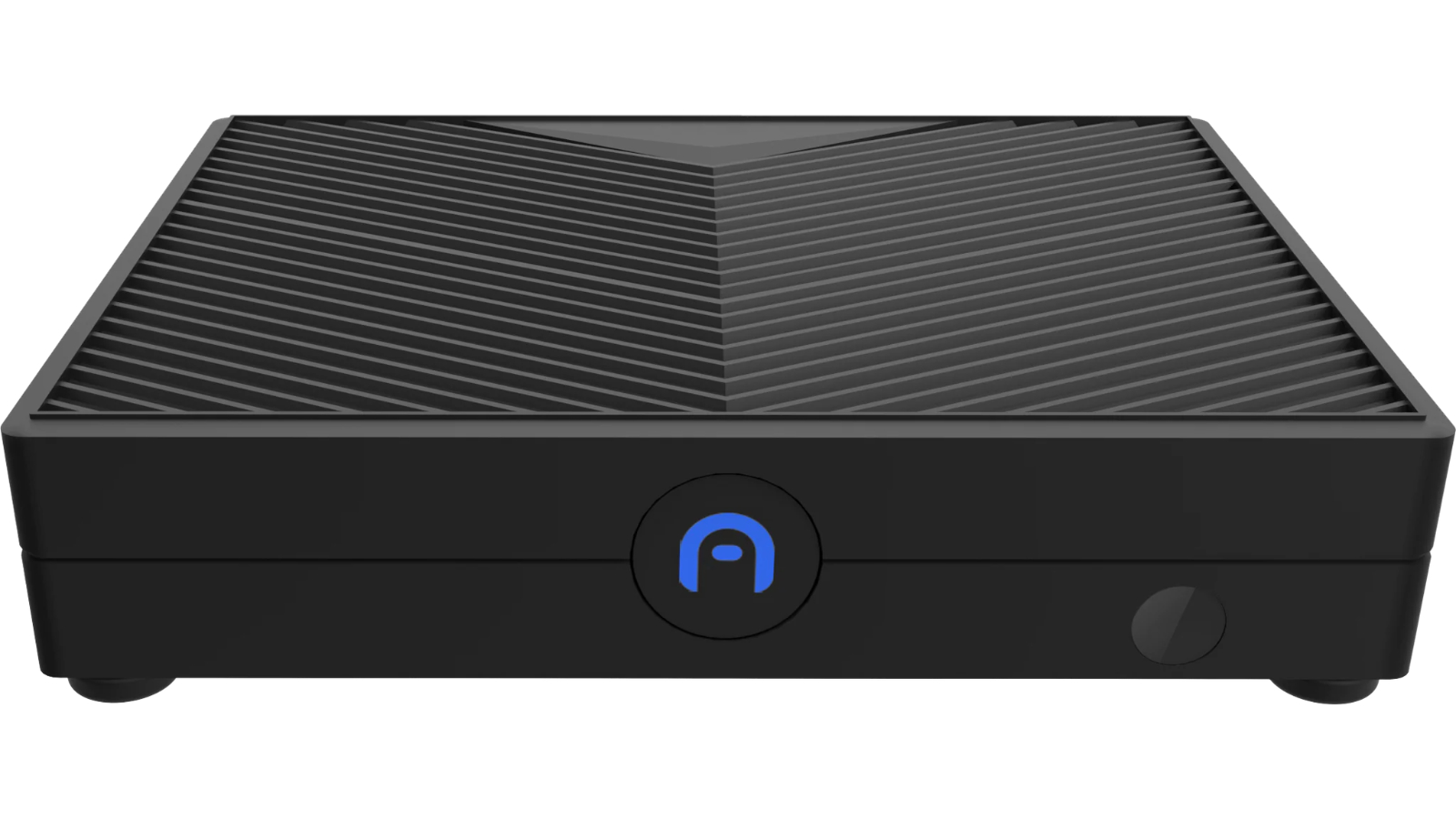
Buy it if…
Don’t buy it if…
It is also considered
If this mini PC doesn’t suit your requirements, check out our selection of the best mini PCs

